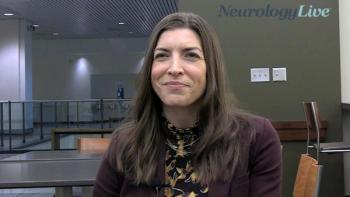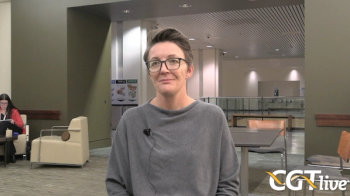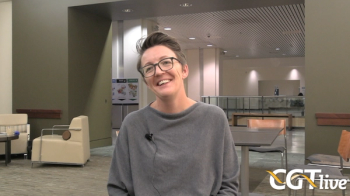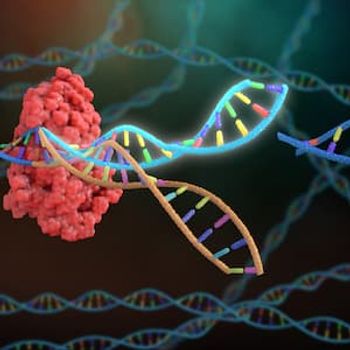Next Generation Gene Therapeutics (NGGT) Biotechnology’s NGGT001, an investigational adeno-associated virus (AAV) vector-based gene therapy intended to treat Bietti’s crystalline corneoretinal dystrophy (BCD), improved the vision of patients treated in 2-site investigator-initiated trial (NCT06302608).1 The results were presented in a poster at at the American Society of Gene & Cell Therapy (ASGCT) 27th Annual Meeting, held May 7 to 10, 2024, in Baltimore, MD.
At 9 months after receiving the gene therapy product, the evaluable patients treated in the study showed a visual gain from baseline of 12.8 ± 3.7 (Mean ± SEM, n = 11) ETDRS letters, the equivalent to 2-3 lines of improvement on the Snellen chart (P = .0026). Furthermore, cofirst author Xiuju Chen, of the Xiamen Eye Center of Xiamen University No. 989, and colleagues noted that 5 of the 11 treated patients (46%) had achieved a visual gain greater than 15 ETDRS letters over baseline.
“BCD is caused by mutations in the cytochrome P450 (CYP) family 4 subfamily V member 2 gene (CYP4V2) encoding a polyunsaturated fatty acid hydroxylase which is dominantly expressed in retinal pigment epithelium cells in the retina,” Chen and colleagues wrote in the poster’s abstract.1 “There has not been any treatment available for BCD. NGGT Biotechnology has developed NGGT001, an rAAV2-based vector expressing codonoptimized human CYP4V2 for treating BCD.”
Key Takeaways
- Next Generation Gene Therapeutics (NGGT) Biotechnology’s NGGT001, an investigational adeno-associated virus (AAV) vector-based gene therapy intended to treat Bietti’s crystalline corneoretinal dystrophy (BCD), improved the vision of patients treated in 2-site investigator-initiated trial (NCT06302608).
- At 9 months after receiving the gene therapy product, the evaluable patients treated in the study showed a visual gain from baseline of 12.8 ± 3.7 (Mean ± SEM, n = 11) ETDRS letters, the equivalent to 2-3 lines of improvement on the Snellen chart (P = .0026).
- AEs related to the subretinal injection procedure used to administer NGGT001 included eyelid and subconjuctival edema, but these AEs were mild in severity and resolved on their own. No indication of intraocular inflammation was present in the treated patients.
In terms of safety, NGGT001 was deemed well-tolerated. One of the treated patients experienced 2 ocular treatment-emergent adverse events (TEAEs), a case of conjunctival edema and a case of eyelid edema, both of which resolved in 5 days and were deemed definitely not related to NGGT001. Several nonocular TEAEs were also observed among patients treated in the study. These included 2 cases of upper respiratory tract infection in a single patient, a case of calcaneal stress fracture in a different patient, and a case of pharyngitis in yet another patient. All of these AEs resolved within 7 days or fewer and were deemed definitely not related to the gene therapy. Chen and colleagues additionally noted that AEs related to the subretinal injection procedure used to administer NGGT001 included eyelid and subconjuctival edema, but that these AEs were mild in severity and resolved on their own. They also pointed out that no indication of intraocular inflammation was present in the treated patients.
The trial included 12 patients in total, all of whom were of Asian ethnicity and aged from 30 to 60 years. The group included 7 men and 5 women who had been diagnosed with BCD with a confirmed CYP4V2 mutation. Prior to treatment, best corrected visual acuity (BCVA) ranged from hand motion to 20/60. It was noted that 3 patients had off-chart vision at baseline, with 2 of these patients having hand motion BCVA and 1 patient having counting fingers BCVA. Six patients in the trial received a lower dose of NGGT001 (1.5x1011 vg/eye) and 6 patients received a higher dose (3.0x1011 vg/eye).
“BCD is an inherited retinal dystrophy characterized by the presence of yellow-white crystals and/or complex lipid deposits in the retina, that may progress to blindness...” Chen and colleagues wrote in the poster.1 “NGGT001 is well-tolerated in adults with BCD, with improved functional vision at month 9."
Click here to view more coverage of the 2024 ASGCT Annual Meeting.
REFERENCES
1. Chan X, Liu X, Cui S, et al. Clinical periodic study report on safety and efficacy of NGGT001 for treating Bietti’s crystalline dystrophy. Presented at: ASGCT Annual Meeting 2024, May 7-10; Baltimore, Maryland. Poster #920.











































